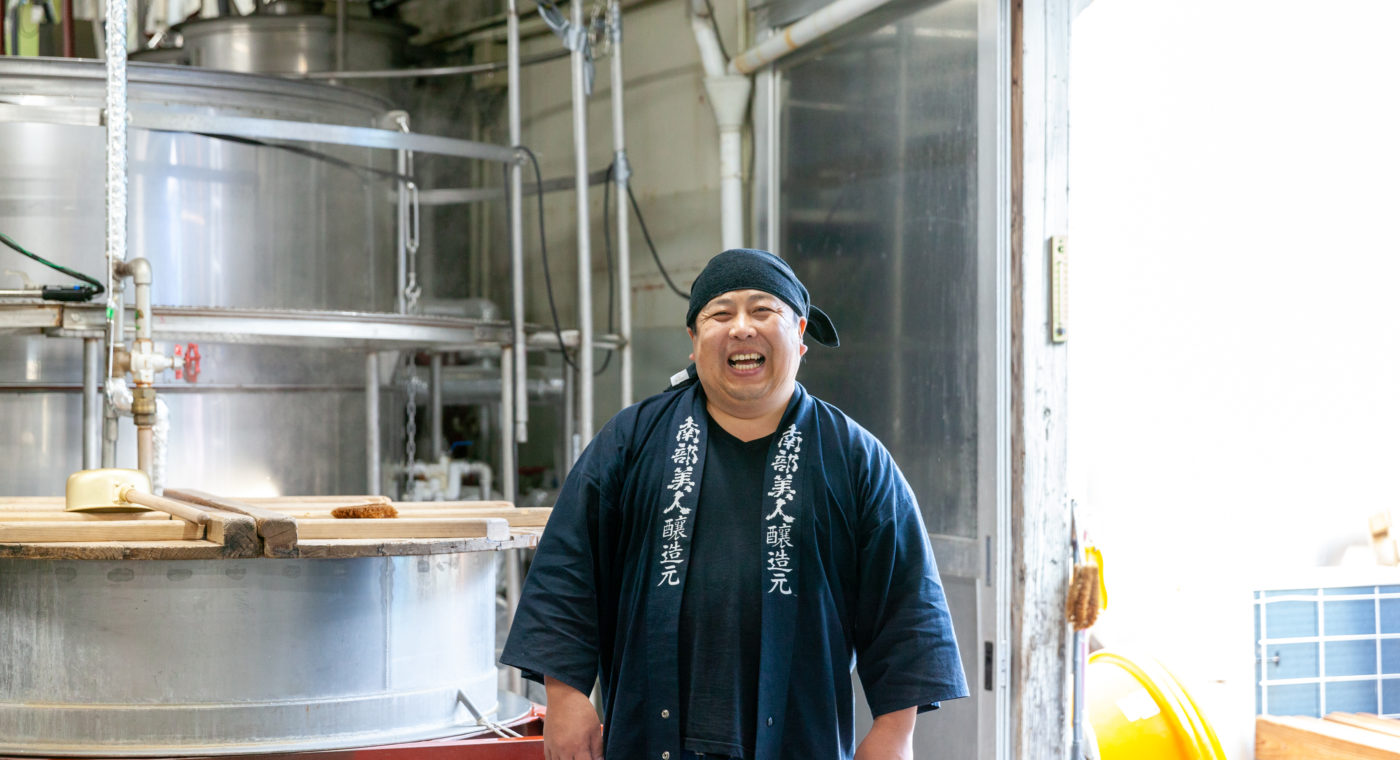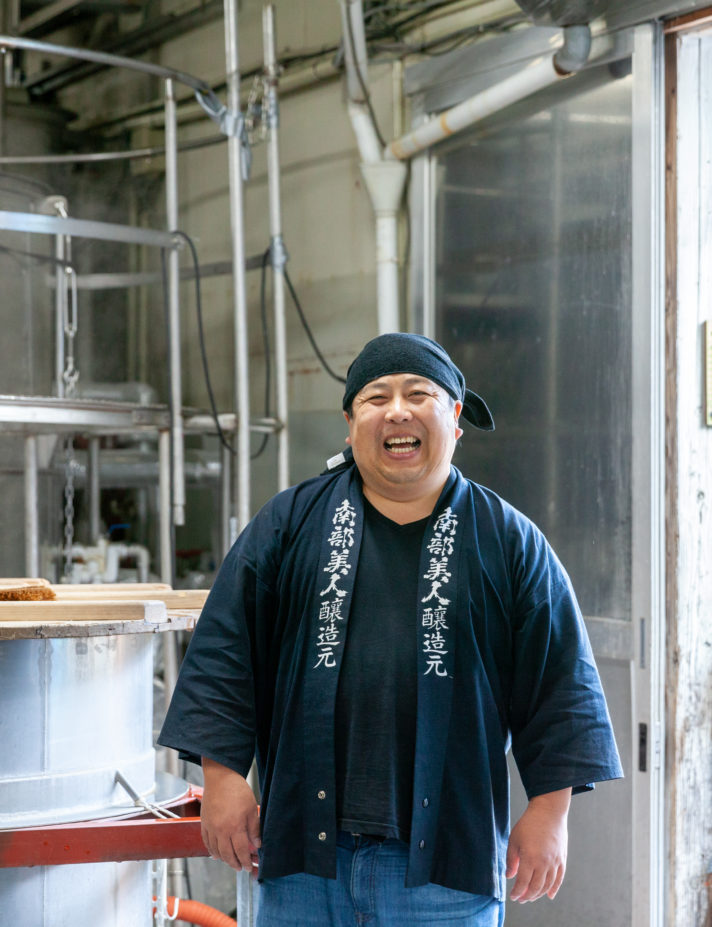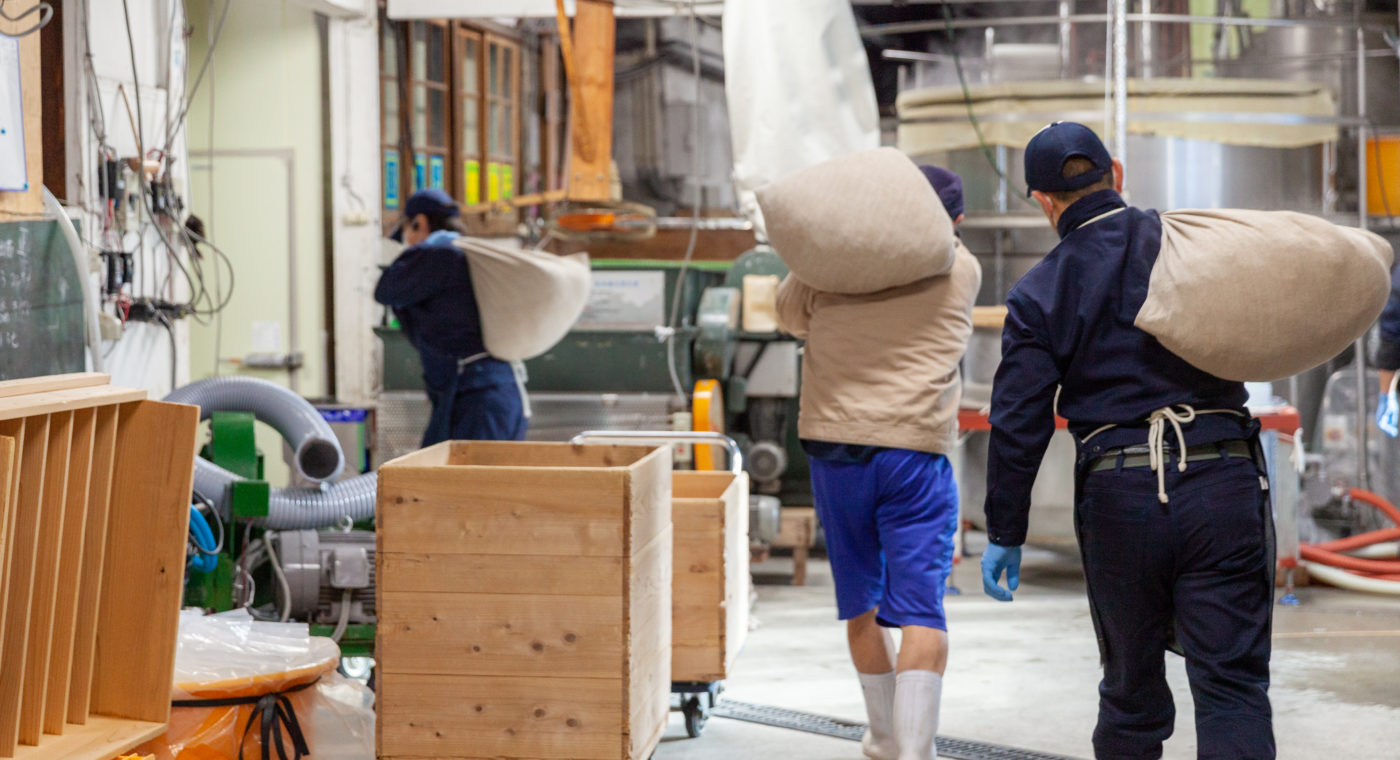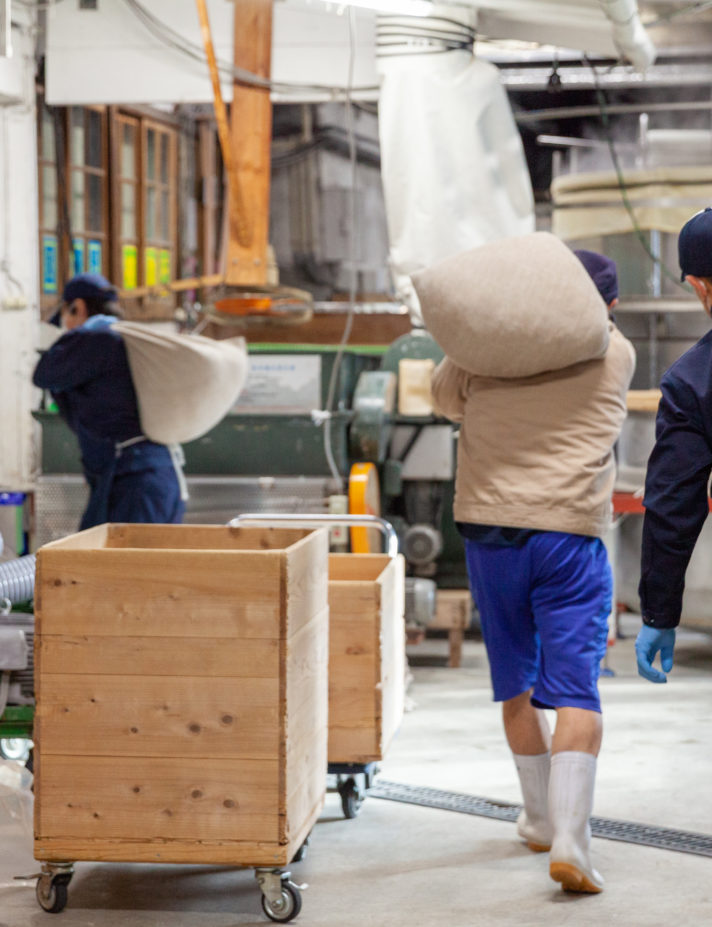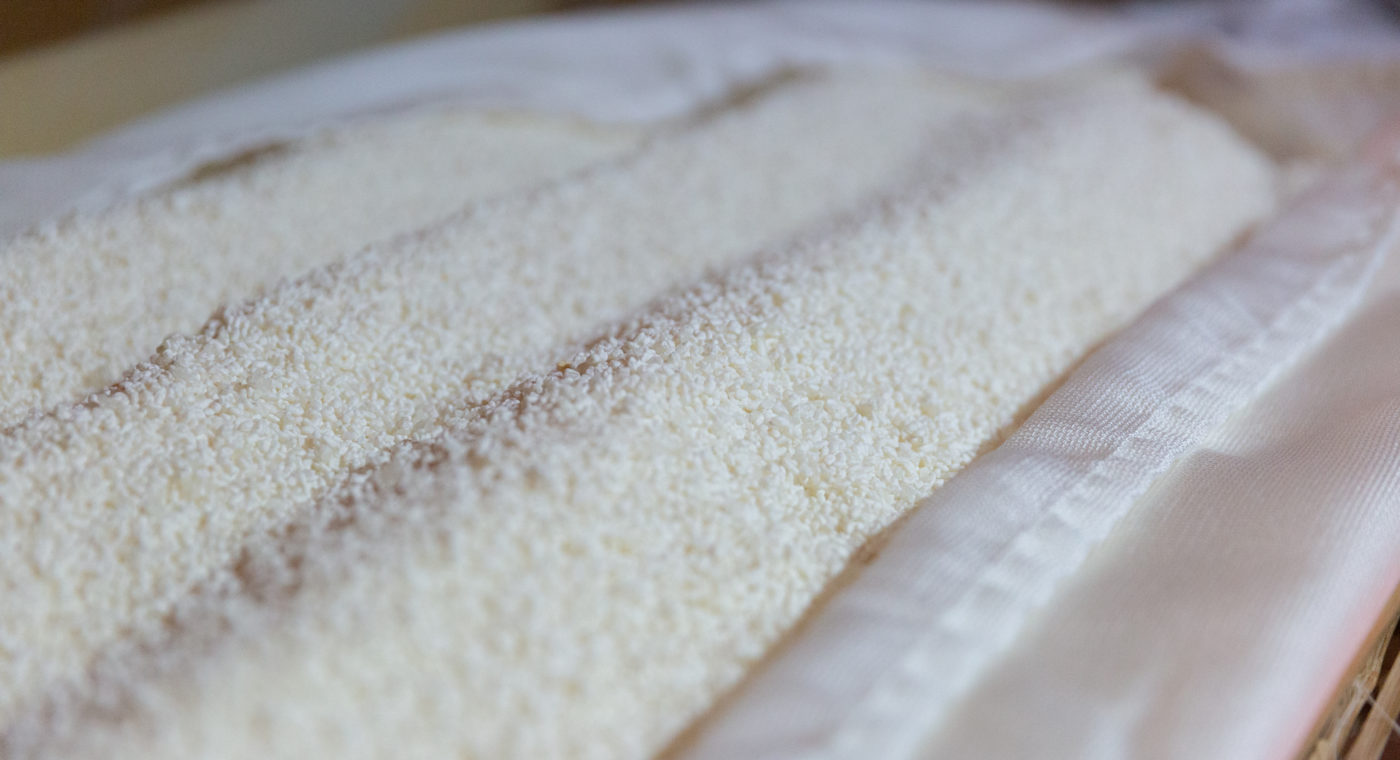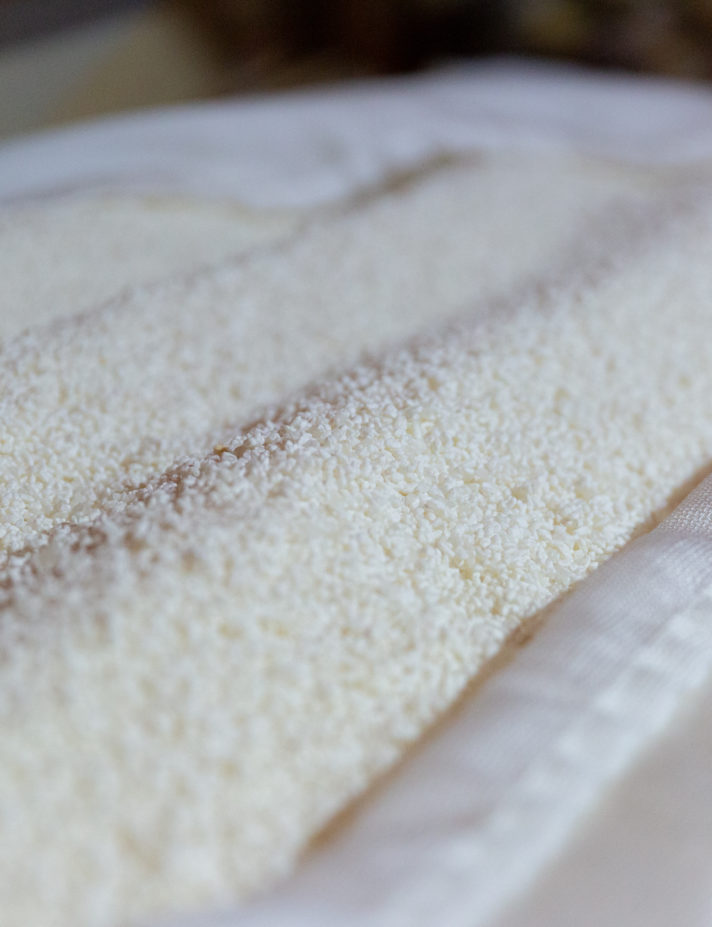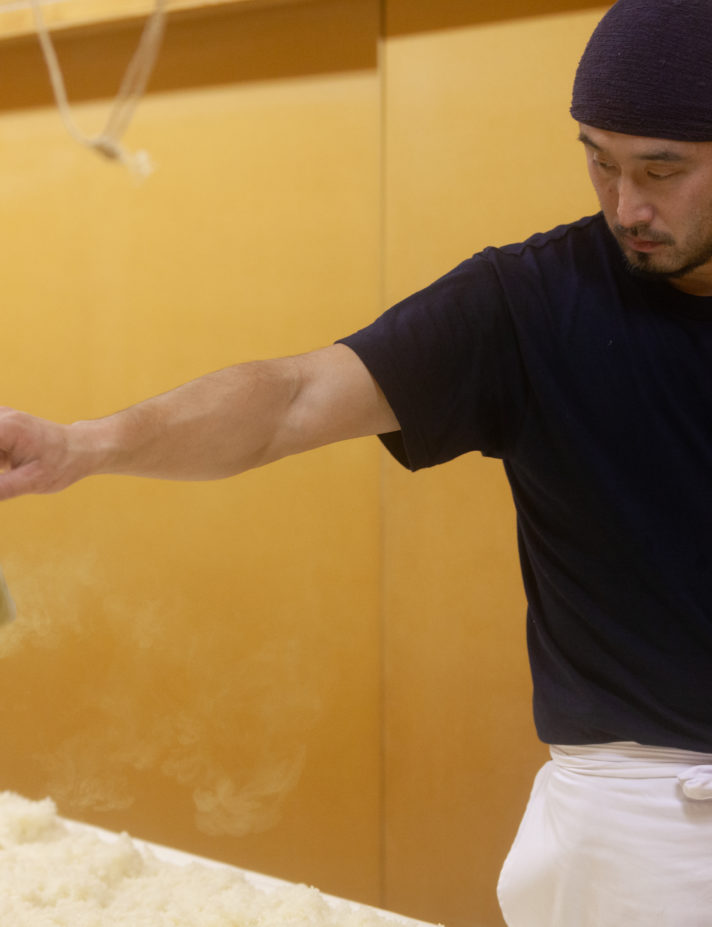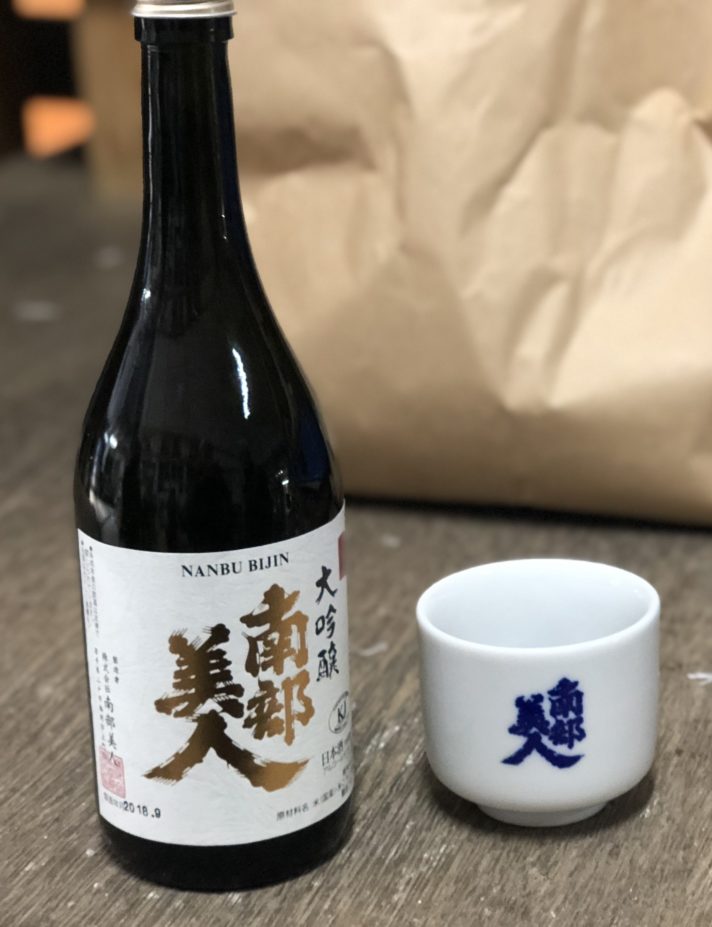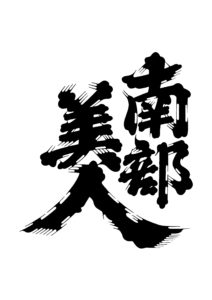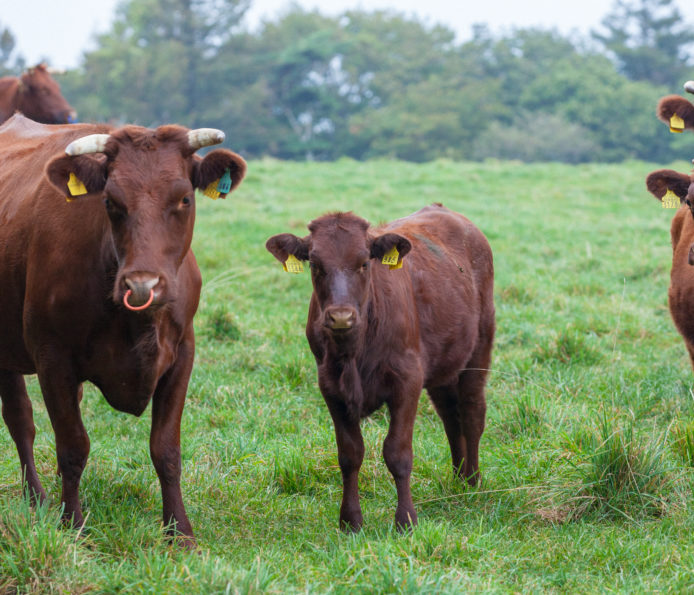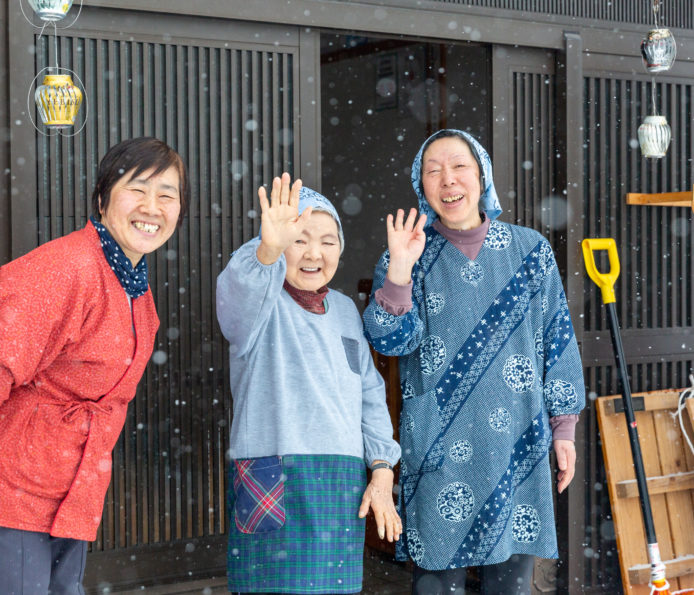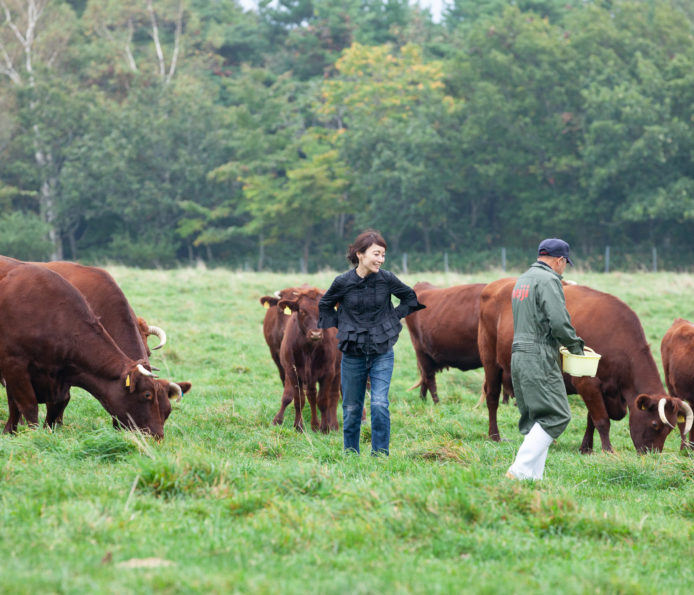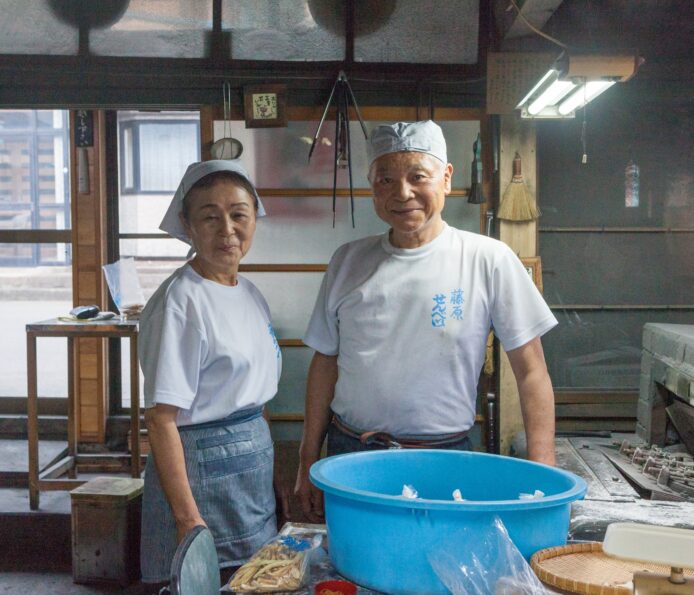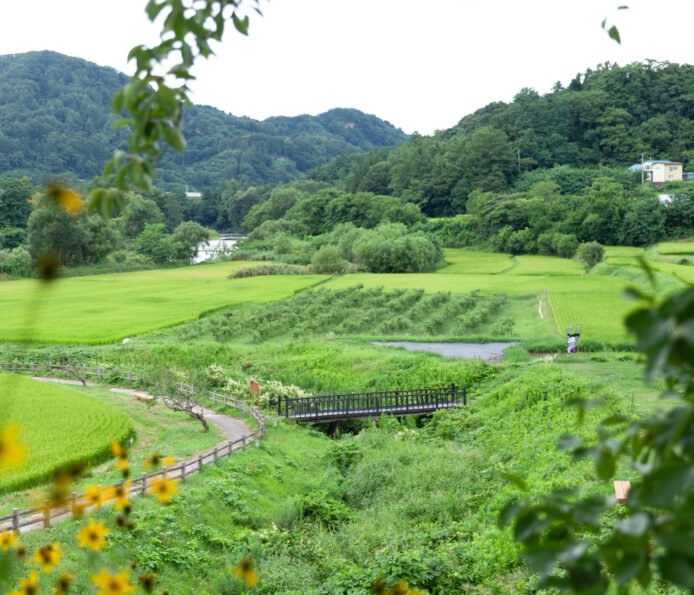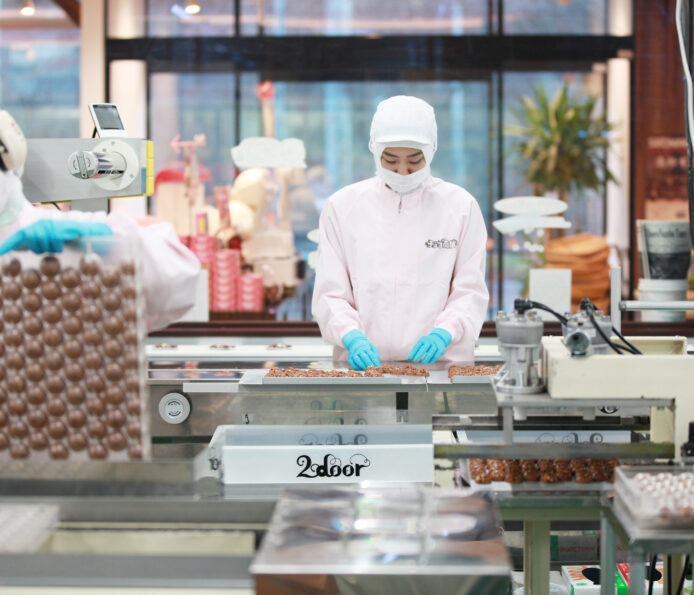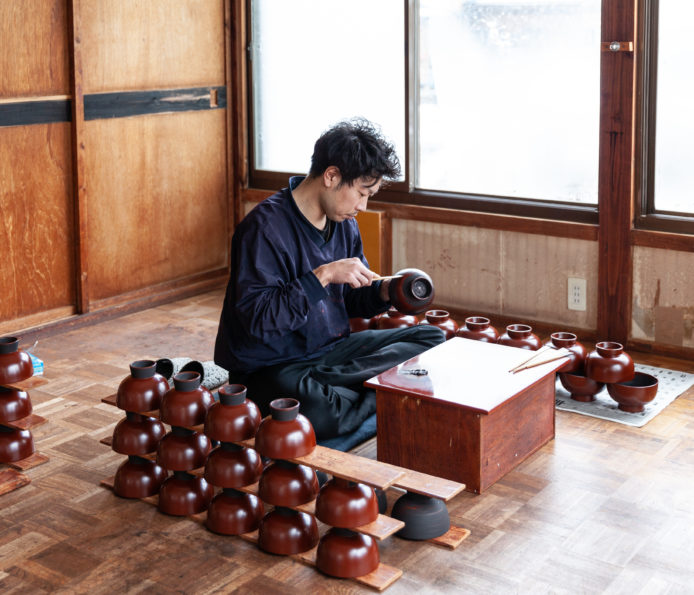Terroir that is only available in Ninohe
On a winter morning in Ninohe, steam comes out from the brewery. Steamed rice is cooled in the cold air and carried by the brewers to the koji room. While the brewmaster sprinkles koji mold on the steamed rice in the koji room, the brewers quickly start the middle step of brewing.
The Nanbu Bijin which is made in Ninohe has been awarded both in and outside Japan. In 2017, it was awarded as the world’s best in the category of Japanese sake at the International Wine Challenge, the world’s biggest wine contest. Befitting the sake’s name Nanbu Bijin (Nanbu beauty), it’s made to a beautiful taste, having characteristics of a fruity flavor from the yeast and a clear after-taste.
According to Nanbu Bijin Brewmaster, Junji Matsumori:
“The difference is made from using locally grown rice and local spring water. Nanbu Bijin is produced with sake rice such as Gin Ginga from Iwate prefecture or Gin Otome from the Kindaichi area in Ninohe and the underflow water of Mt. Oritsume. The hard water helps fermentation and strengthens the after-taste. That is what makes the characteristics of the taste.”
Sake production in the Nanbu area is said to have developed by teachings from Omi (present-day Shiga Prefecture) merchants who came to Iwate. The sake production developed adjusting to the climate of Nanbu and began to be called the “Nanbu style.” Nanbu brewmasters became the top of Japan’s three greatest brewmasters. Only those who belong to the Nanbu Brewmasters’ Association and have accumulated deep learning can become a Nanbu brewmaster. Mr. Matsumori learned the Nanbu Style as a Nanbu brewmaster while learning Nanbu Bijin’s original sake production from the previous brewmaster.
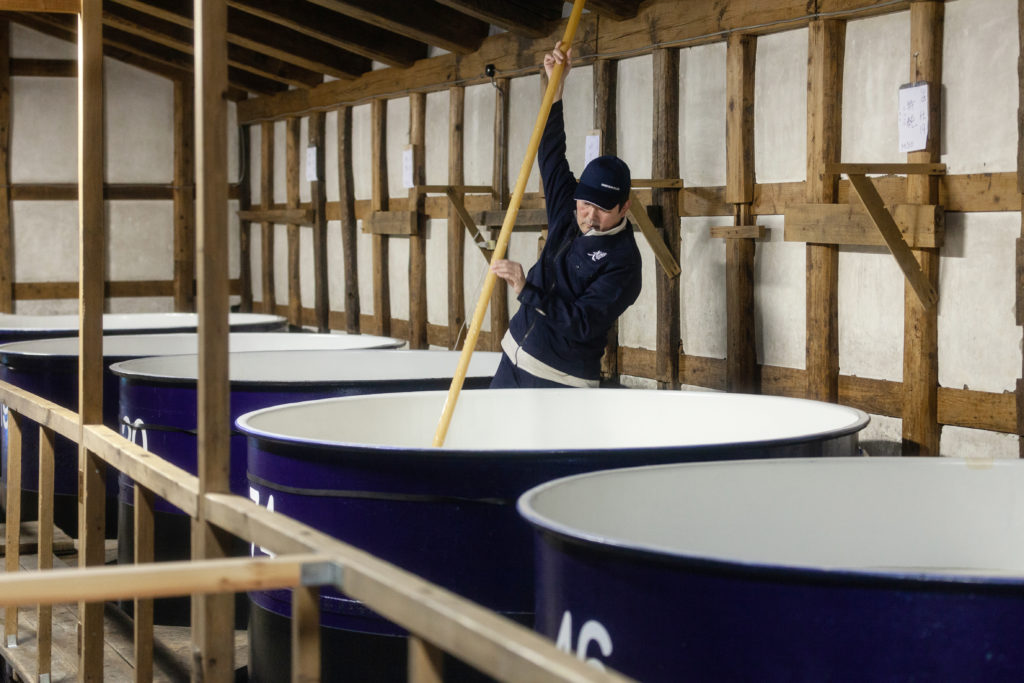
Nanbu Bijin focuses on producing high quality sake using local ingredients. It’s committed to the identity of Iwate, Ninohe and Ninohe’s terroir.
“We communicate directly with local sake farmers and exchange opinions when we produce sake. We also listen to the opinions of young cooks who have returned to Ninohe to open their own restaurants after gaining experience at other places. They use local pork, chicken, and beef, paired with the sake to be delivered to people all around Japan. This is how Ninohe’s production exists.”

Even though Akita and Iwate are both in the same Tohoku region, their sake production is entirely different. Being divided by the Ou mountains, the climate is completely different, even as they lie on the same latitude. Akita, being on the side of the Japan Sea has much snow and a wet climate; in comparison, Ninohe which is on the Pacific Ocean side is colder and has a dry climate. There are clear distinctions between the sake as the brewers in both regions have conducted years of research while confronting advantages and disadvantages of the local climate. Fermenting at a low temperature over a long period of time is the suitable way to produce sake during Ninohe’s winter.
Kuji Kosuke, the 5th generation kuramoto (brewer) at Nanbu Bijin says,
“If you travel Ninohe, I would love for you to see the rice fields. Even though you might think rice paddies can be found anywhere, it’s Japan’s original scenery and each of them are definitely different, one by one depending on its region. Nanbu Bijin is made from rice grown in Ninohe’s landscape, by Ninohe’s people. The wind, air, and bacteria that have been producing Nanbu Bijin for a hundred and some decades, all of these are necessary to make the local sake.”
You can visit the brewery of Nanbu Bijin. Once you step into the historical brewery you’ll feel the cool temperature of the brewery, meet the brewers, hear the sounds of microorganisms making sake in the tanks, and of course, smell the aroma of sake.
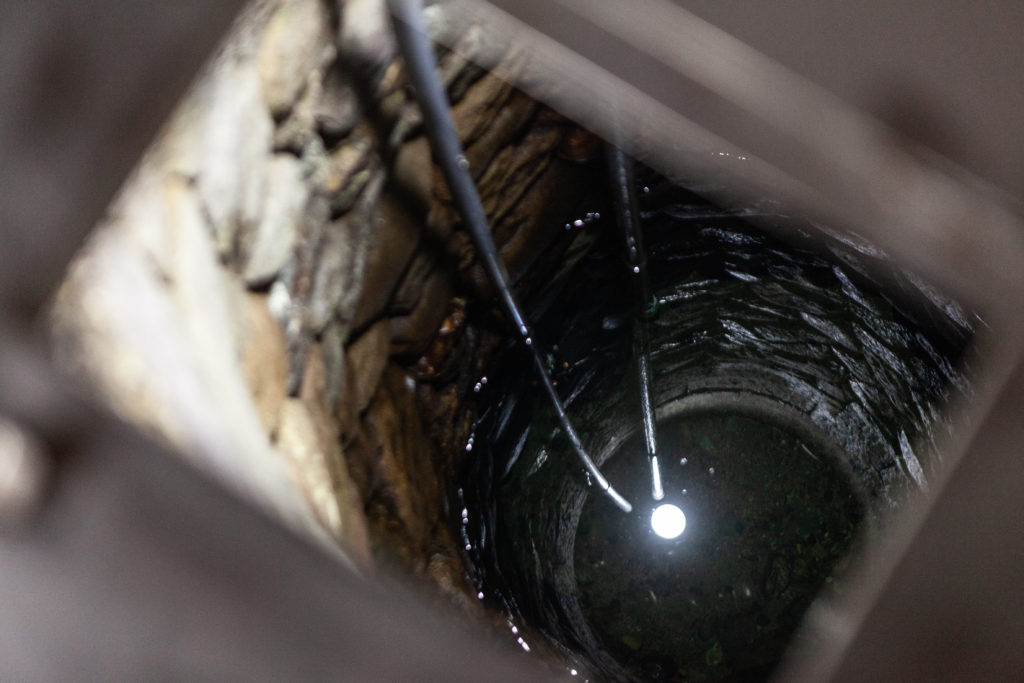
Mr. Kuji has worked hard to promote the deliciousness of sake overseas, while also researching and inventing new sake. He explains “Ninohe’s terroir to boast to the world.”
It is a terroir that ties sake with tableware. We can complete many stories of Ninohe by combining many of local items, such as putting Sasuke pork on a Joboji Urushi (lacquer) Paint dish and pairing it with sake, or enjoying Ninohe’s sake in a Joboji Urushi paint cup.
“Ninohe has everything.”
This is the true charm of Ninohe’s terroir.



